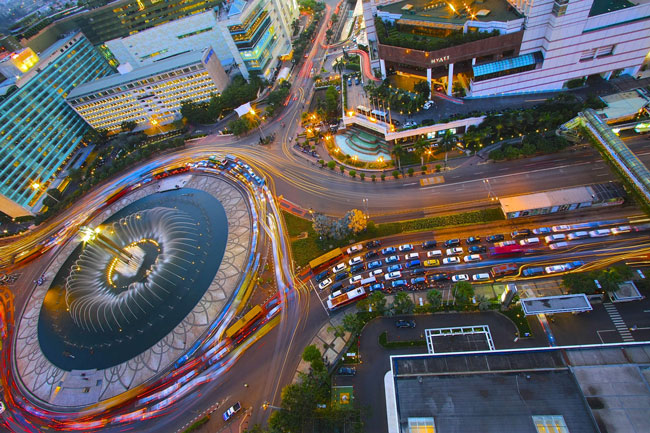For Clara Rimba, a 35-year-old wife of a pastor in Tangerang, on the western outskirts of Jakarta, getting stuck in the city’s notorious traffic jams was the norm.
So when the Jakarta MRT, Indonesia’s first subway started running in March, she was thrilled, knowing that it would ease her commute to attend prayer meetings.
“The worst traffic jam I experienced was getting stuck for six hours, so the new train will be good and will help commuters have a faster and more convenient travel,” Rimba said.
Dina Sasti Damayanti, 43, and a media analyst at market intelligence provider Indonesia Indicator, said the new subway has become the main choice of transport for Jakarta residents, particularly those who live in the suburbs.
Jakarta, like several other cities in Southeast Asia, is notorious for its gridlock, with commuters estimated to spend 63 hours a year or more than two and a half days stuck in traffic jams.
The subway line’s route runs 15.7 kilometres from Lebak Bulus, a populous residential area in the southern suburbs, to the downtown business district. The line will ultimately connect with the Light Rail Transit, which is under construction. The rest of the MRT network is expected to be completed in 2024.
It’s not just commuters seeing an upside to the new subway line, analysts also reckon it will revitalise the city’s property market, particularly the office segment, which is characterised by decreasing occupancy rates and declining rental growth.

The new public transport system is expected to lift the city’s property sector
Property consultancy Cushman & Wakefield said that the MRT has cut the local commute for office workers in the central business district to five minutes from the previous 25 to 30 minutes.
“The Jakarta MRT is likely to boost demand for offices and condominiums with direct or convenient access … and is also likely to boost footfall in shopping malls with good connectivity,” said James Taylor, head of research at JLL in Indonesia. But he was quick to add that there has been no tangible uplift in rents or prices yet because of the MRT.
“Areas along the MRT route from TB Simatupang, up through South Jakarta and onto Sudirman and Thamrin would be impacted the most as they are the areas with the best access. Office, retail and residential sectors are all likely to be positively impacted,” Taylor said.
According to Cushman & Wakefield, occupancy in the prime office space in the central business district in the first quarter of the year was 74.13 per cent, down from 76.67 per cent a year earlier owing to the recent addition of large supply. Rents, meanwhile, fell 7.3 per cent to US$20.24 per square metre.
“The areas that will be positively impacted are properties located surrounding the 13 stops along the route,” said Arief Rahardjo, director, strategic consulting at Cushman & Wakefield Indonesia.
Along with a potential increase in property prices, redevelopment could also take place in other areas close to subway route.
“Most buildings in the area are old with relatively small land sizes. So with more commercialisation there will be more small offices and vertical housing and hotels along the corridor,” said Rahardjo, adding that it was still too early to say what the long-term impact of the subway line will be.
In Hong Kong, opening of new MTR lines would immediately be followed by an increase in property prices of nearby areas.
In Ap Lei Chau, for example, the average sales price of South Horizons flats jumped to more than HK$15,300 (US$1,950) per square foot in December 2016 from about HK$13,320 per sq ft in January 2016. The increase came following the opening of the South Island Line on December 28, 2016.